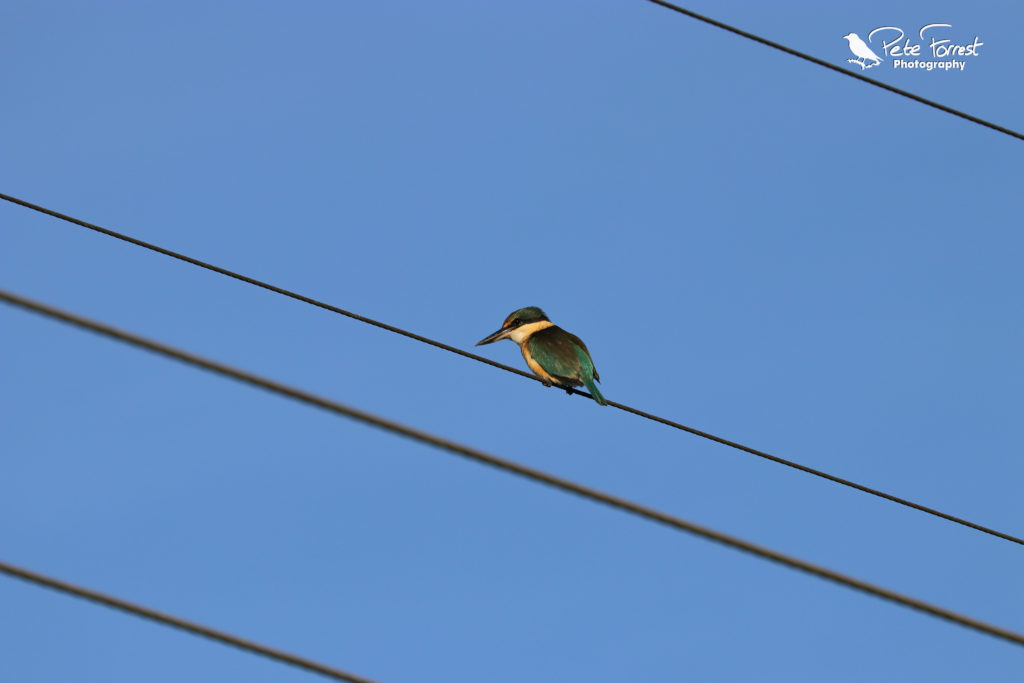The sacred kingfisher, New Zealand kingfisher, or just kingfisher here in NZ, is the only species of kingfisher native to Aotearoa. The only other member of the kingfisher family found here is the kookaburra, which was introduced from Australia. The sacred kingfisher is about 24cm in length and weighs in the region of 60g. Unlike some of the other 85 species of kingfisher found elsewhere in the world, the sacred kingfisher is naturally common throughout New Zealand and can be seen almost everywhere you go. They are, however, more common the further north you are as they prefer the milder climate. The kingfisher is a beautiful bird and it’s fast in flight, yet has predictive behaviour. This, combined with its abundance, makes it a great bird to not only practice photographing birds but one where you can get some great shots to be proud of too.

The key to taking photos of any bird or animal is to understand their natural habitats and behaviour. The kingfisher can be found in inland and coastal regions. Though almost always near water and on a perch with which it can look down at its surroundings. Its brilliant blue back, creamy-orange front and black banded head make it perfect for blending in at most angles. I often find myself walking up on a kingfisher only to notice it when it startles and flashes past, even when I’m looking for them. Before you can photograph a kingfisher you need to be able to identify it without startling it. So, how do you spot a kingfisher?

The high perches of a kingfisher are where you should start looking for them: lower tree branches, powerlines, fences, the top of rocks. They rarely hideaway on a branch behind thick foliage because their perch is for surveying the area below them in order to hunt. So you don’t need to go searching every tree for signs of a kingfisher.
Kingfishers nest in tunnels in mud banks. If you wait patiently enough during the 7-10 day period that chicks remain within the nest, you can catch glimpses of the adults flying in and out to feed them. I have yet to be in New Zealand during the breeding season and will cover more about their behaviour at this time of year when I have my own experience to add.
Top tip
I find the easiest place to spot kingfishers is in rocky open coastal regions. Being open you can spot them from further away, giving you a chance to judge your approach without startling them. Although their blue and black backs are perfect camouflage with the sea and rocks, if you get down low you can more easily see their silhouette clearly above the rest of the rocks. This is because they go for the highest point to get the best view.

From standing kingfishers can be hard to spot 
When you get down low their high perch becomes more obvious
For more information on sacred kingfishers see NZ birds online
And for more photos see my sacred kingfisher gallery





Leave a Reply